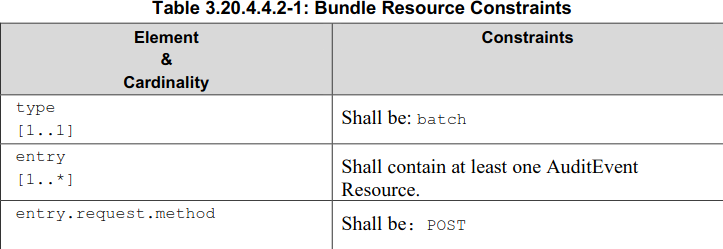RestfulATNA Simulator
Objectives
This restful-atna-simulator (RAS) project is a simulator for RestfulATNA transaction.
The objective is to simulate Audit Record Repository for ITI-20 transaction through RESTful transactions based on FHIR standard using HAPI FHIR server:

How the application works
The project shall do this following action :
-
An
Audit Resource Requestis sent to the RAS. –> The RAS shall return anAudit Resource Responsewith a HTTP 2xx code. -
An
Audit Bundle Requestis sent to the RAS. –> The RAS shall return anAudit Bundle Responsewith a HTTP 2xx code. The Audit Bundle Request shall respect these constraints :
If no resource, an empty one, another FHIR resource or a non-existant FHIR Resource is provided, the RAS shall return a HTTP 400, 422 or 500 error.
NB: For Audit Bundle Request cases, when a entry[0].resource is declared a resourceType SHALL BE present, if not a error “theResource is empty” with a stack java errors appears.
How to use the application
-
Once the application is deployed, the endpoint is constructed like below :
POST
endpoint/type?_format=mime-typeHTTP/1.1
endpoint: where the application is deployedtype: The type of the resource you want to sendBundleorAuditEventmime-type: The format of your response sent by the applicationjsonorxml
- The Content-Type is declared as below :
- Content-Type:
application/fhir+xmlorapplication/fhir+json
(if the request is sent respectively inxmlorjsonformat)
- Content-Type:
For example if the application is deployed on example.com, and a AuditEvent is sent in JSON and the response must be returned in XML, the endpoint and content-type should be :
- Endpoint:
https://example.com/restful-atna-simulator/AuditEvent?_format=xml - Content-Type:
application/fhir+json
The RAS ONLY accept POST request and Bundle or AuditEvent FHIR resources.